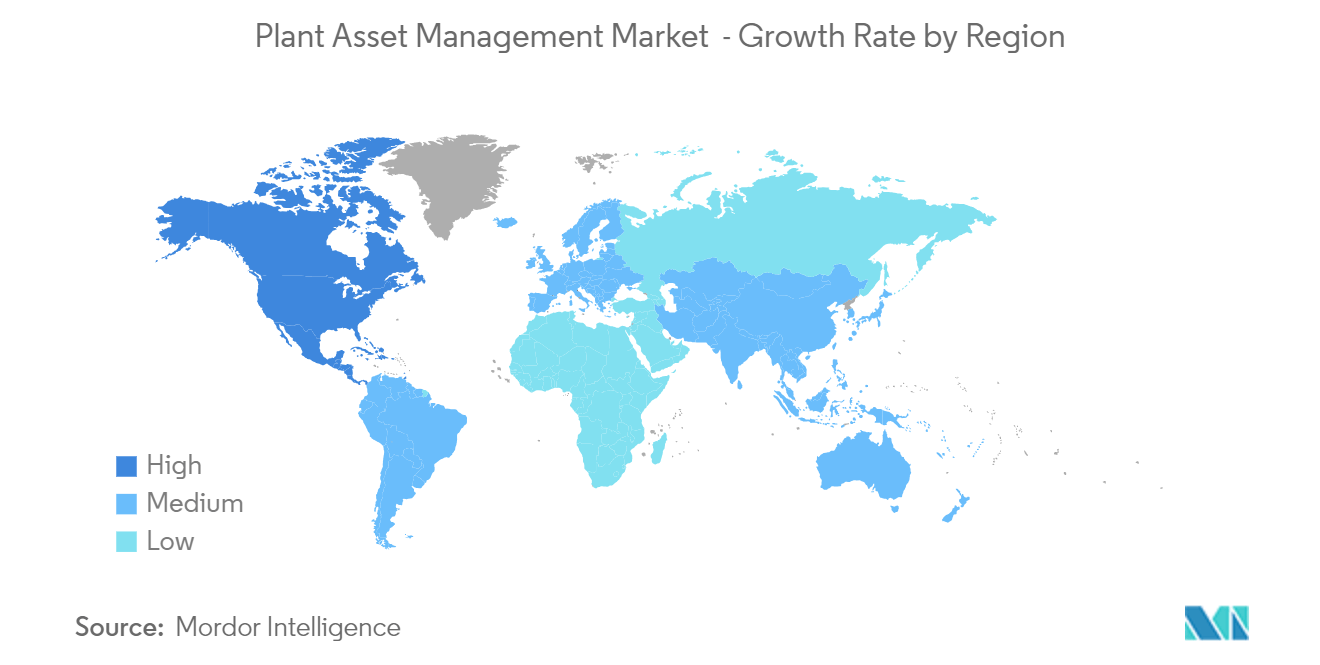Market Trends of Plant Asset Management Industry
Oil and Gas Accounts For Significant Market Growth
Oil and gas are high-functioning assets traded internationally and used across multiple industries. It becomes complicated to manually track all the activities of this trade, from procurement to selling. The asset management software plays an important role here, ensuring operational costs are kept marginally low. Predictive maintenance is a crucial asset management feature that helps track and schedule repair cycles, lowering labor costs and utilizing company funds.
Real-time monitoring of all assets' location, performance, and safety is critical in the oil and gas industry, as most of the equipment used in this sector is owned or leased by the companies. Pressure control equipment, logging equipment, storage containers, pipes, and crossings are some of the instruments that require constant monitoring and maintenance for the smooth functioning of day-to-day operations and business.
The process plants in the oil and gas industry are complex and consist of expensive and critical equipment. As the plant's condition and performance degrade over time due to wear from several factors, this harms the production and the associated costs. Asset management strategies aim to counter this impact by systematically monitoring equipment conditions, avoiding unplanned production downtime, and reducing operational expenses by optimizing maintenance planning.
The upstream oil and gas industry companies undergo at least 27 days of unplanned downtime each year, costing them 38 million USD. Predictive Analysis uses Machine learning (ML) techniques to forecast when machinery and equipment need repairs. Thus it can reduce the overall downtime cost, thereby saving a lot of unnecessary expenses for the company.
Environmental risks, like oil spills or any other accident at the production facility, can be averted with the help of effective maintenance plans and asset registries. A company can save up to 18% with the help of preventive maintenance. British Petroleum (BP) has partnered with Microsoft for its Azure artificial intelligence (AI) and Machine Learning solutions to transform oil and gas operations. Artificial intelligence (AI) will increase safety measures for employees working in remote locations.
In the previous year, Baker Hughes signed a contract with C3 AI, Accenture, and Microsoft to provide industrial asset management (IAM) solutions for clients in the energy and industrial sectors. The enhanced digital technologies of the solution will improve the safety, efficiency, and emissions profile of industrial machines, field equipment, and other physical assets.

North America to Hold Significant Market Share
There were 122 oil and gas contracts in North America in the previous year, US contribution being the highest with 113 contracts, representing a 93% share of all the oil and gas contracts, followed by Mexico at 3% and Canada at only a 2% share. Operations & maintenance covered 99 of these contracts, which shows Oil and Gas companies are investing in asset management.
According to Westwood's onshore pipeline forecast, companies are expected to invest around 370 billion USD between 2022 and 2028 on new oil and gas pipelines. It is projected 310,000km of new oil and gas pipelines will be built during this period. China and North America are expected to lead the charge. North America will account for 205,000km of total installments for gas pipelines. North America became the largest LNG (liquified natural gas) exporter in the previous year, as the demand surged from Europe and Asia due to the Russia- Ukraine conflict.
Plant Asset Management is becoming more accessible due to advancements in the cloud in this region. These solutions can help plants refine maintenance schedules to cut costs, track and manage inventory and equipment usage, adapt to labor shortages, and more. Companies are introducing new cloud solutions exhibiting to improve productivity.
US-based Honeywell introduced a sustainability solution for carbon emissions monitoring and optimization. The sensor-based solution will enable organizations to monitor and visualize emissions in near real-time. Industrial sectors will benefit from the new key as they work to cut their greenhouse gas (GHG) emissions and achieve their carbon reduction targets.


